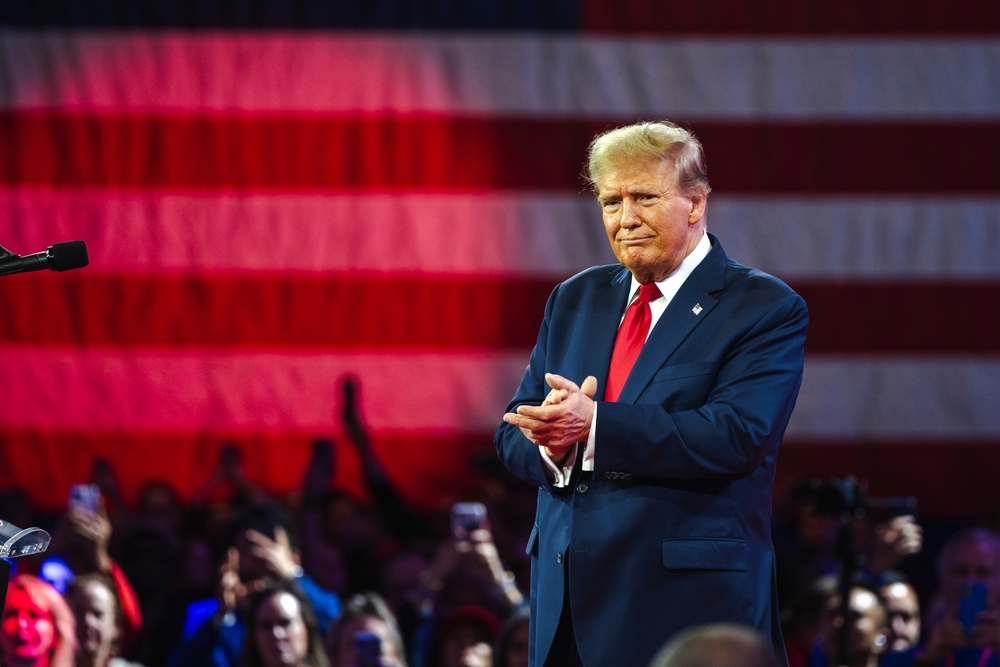President Donald Trump made good on his campaign promise by signing the executive order aimed at transforming the United States into the crypto capital of the world. The executive order outlines rapid action to provide regulatory clarity whose absence has condemned the industry to operating in the gray zone.
The order signed on Thursday (January 23) aims to cement the United States as a global leader in digital asset and artificial intelligence (AI) technology. Additionally, the order bans the issuance of digital currency (CBDC) by the country’s central bank, which has seen Republican politicians criticize it as a path to invasion of privacy.
Venture capitalist David Sacks, who Trump entrusted with the role of crypto and AI czar, witnessed the event from the Oval Office. The order is set to facilitate the creation of a task force to develop clear crypto regulations.
The signing of the executive order comes after widespread expectations that Trump would deliver on his pro-crypto promise during his inauguration on Monday, January 20. While the industry waited until Thursday, the order contains a directive to create the National Crypto Reserve from legally seized assets.
The decree proposes sweeping guidelines supporting the establishment of a comprehensive framework to support innovation. Additionally, it will eliminate the regulatory uncertainty behind the country’s divestment of crypto projects and talent to crypto-friendly jurisdictions.
Supporters of this initiative present it as a way to safeguard the country’s financial sovereignty. The main provision of this order provides a formal platform banning CBDC which Trump repeatedly opposed during his campaign.
Creation of a cryptography working group
The central objective of this order is to establish the crypto working ground under the aegis of the National Economic Council (NEC). The newly created committee will operate under the leadership of David Sacks.
The crypto czar must work with other financial market regulators to harmonize the overhaul of national digital asset policies. Nonetheless, the task force faces a tight timeline, especially the 30-day window, to identify regulations and guidelines that hinder the crypto sector.
The order gives the task force 60 days to issue recommendations on necessary repeals, modifications and creation of new rules.
A six-month deadline is stipulated for the task force to formulate comprehensive crypto regulations that govern the issuance and operations of digital assets, including stablecoins. This initiative aligns with Trump’s campaign promise to eliminate regulatory ambiguity.
The lack of regulatory clarity in the United States has been a long-standing frustration for the industry under the Biden-Harris administration and Gary Gensler’s tenure as SEC chairman.
Is the National Cryptocurrency Stock Next?
The notable element of the proposal is the stipulation to create the National Crypto Reserve. Notably, the digital asset stockpile is expected to contain cryptos legally seized by federal law enforcement.
The proposal offers a broader approach to the previously floated idea of a national Bitcoin reserve. Its current form is far from BTC alone, as it captures other altcoins developed in the United States to increase the adoption of digital assets.
Several crypto purists believe that the broader focus on altcoins dilutes the initial initiative. However, industry insiders believe that this recent move stems from increased lobbying efforts undertaken by various blockchain companies, particularly Ripple Labs, which has recently made significant investments and strategic partnerships to promote its XRP token.
Anti-CBDC campaign
Trump’s executive order unequivocally banned the circulation and issuance of CBDCs on American territory. This strong stance expands the perceived threat that CBDC poses to privacy, financial instability, and national sovereignty.
Unlike cryptocurrencies such as XRP, Bitcoin and SOL, CBDCs are primarily government-issued currencies that operate on private blockchains.
Critics warn that CBDCs could grant central banks increased levels of monetary oversight, allowing them to control how their holders spend their money. Trump’s position contrasts with the approach of the Biden administration, which supported the initiative to explore Development of CBDC.
Abandoning the pro-CBDC course leaves the United States in the background, unlike 100 other global competitors in various phases of development. The executive order confirmed Trump’s position on abandoning such projects under his administration.
Editorial credit: Jonah Elkowitz / Shutterstock.com

